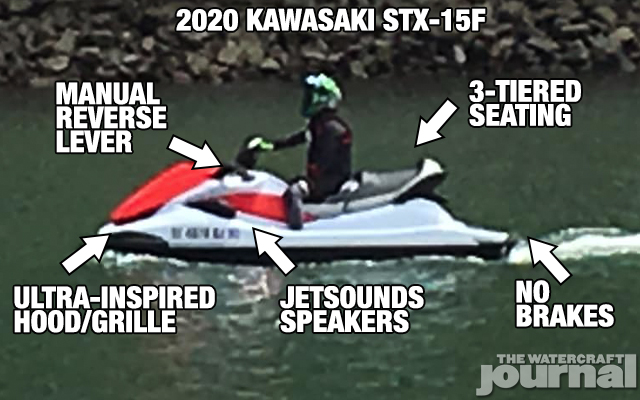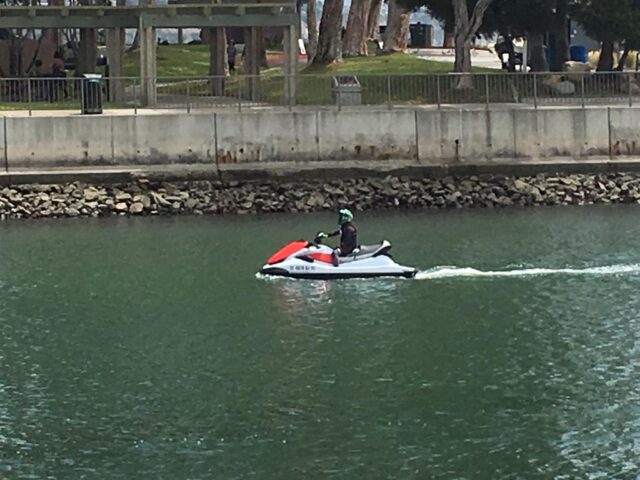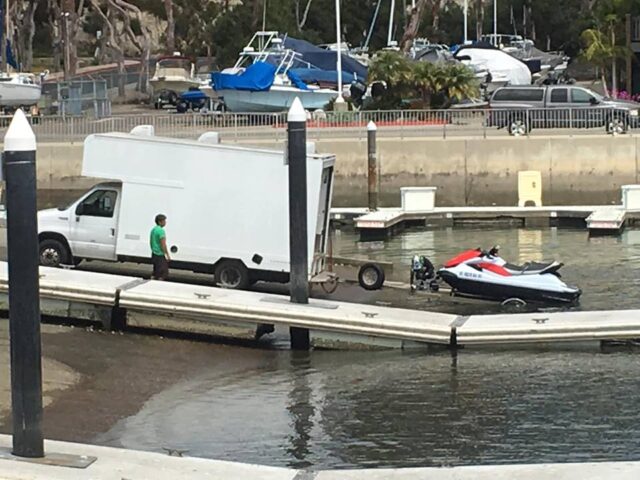
Whoa, Nelly! Only three days into the new year, The Watercraft Journal kicked things off with some pretty polarizing gossip concerning the Big K: Either Kawasaki’s watercraft division was planning on calling it quits after 2022, or they were currently in development of a Rec Lite-segment runabout to compete with Yamaha’s EX Series and Sea-Doo’s Spark. As time would reveal, the latter was closer to the truth.
Understandably, the article ignited a maelstrom of chatter, ruminations and more comically, hate mail. Nevertheless, The Watercraft Journal‘s sources within Kawasaki were resolute; morale within the watercraft division was at an all-time low; corporate had become disenfranchised by the brand’s ever-slumping PWC global market share; and there was no money to develop anything new.
It is imperative for PWC enthusiasts to understand that the most expensive part of redesigning a watercraft is the tooling, which by information gleaned from all three OE’s averages about three million dollars. Much of that cost goes into creating the stamping molds for the hull and deck alone. Smaller items like fairings, hoods and the like are resoundingly cheaper given their respective size and weight.
Consider the savings accrued by Yamaha when you realize that the GP1800R, VXR, VX Cruiser HO, VX Deluxe, VX Limited, VX Sport and standard VX all share the same molds. Equally, Sea-Doo’s RXP-X 300, GTR-X 230, GTR 230, and entire GTI lineup share the same deck, with all but one of these sharing the same hull. Manufacturers are in a constant pursuit to save production costs, and Kawasaki Motor Corp. USA efforts to shave a few bucks couldn’t be more evident than in its 2017 SX-R.
Culled from a who’s who of parts bin bits and pieces, the SX-R shared more with the STX-15F than its namesake. Moreover, the ski’s developers, Minuro Kanamori and Craig “Fuzzy” Boyd, were given nearly zero budget to develop the SX-R, having to spend their own time rigorously testing the standup out of Dana Point, California. Despite the team’s hamstringing, they presented a viable ski worthy of the SX-R title, only to have accountants penny-pinch it into the patchwork that hit dealer floors.
Therefore, it was one heck of a stretch to believe that Kawasaki was developing a Rec Lite entry from whole cloth. Rather, persistent digging revealed that the mystery ski spotted at Dana Point late last year wasn’t a Spark-fighter at all, but what will become the 2020 Kawasaki STX-15F. The craft would go mainly unchanged, using the same hull and deck that has existed for over sixteen years, with some minor adjustments.

First, a wholly redesigned upper deck is expected to feature superior ergonomics, a taller seating position to improve rider posture; a three-tiered seat; a reconfigured dashboard and steering headpiece; as well as new angled fairings and hood more reminiscent of the larger Ultra models. The STX is expected to pick up a bit more storage with a larger glovebox and bow storage too.
The big reveal is the incorporation of the Ultra’s fly-by-wire engine throttle control. Seeing as the STX-15F shares the same powertrain as the naturally-aspirated SX-R and Ultra LX, Kawasaki is finally permitting the lowly STX-15F some accoutrements – primarily Cruise Control and Eco mode. Whether the Ultra’s electric trim will be included has yet to be confirmed.
These additions will give way to a second STX offering, which we’ve been told will be marketed as a “LX-type” segment. It is this more well-equipped STX that will likely get Cruise Control, the stadium-like seating, and superior materials used on the 310LX. While there was no hard confirmation, it is believed that Jetsounds will be available on this higher optioned model.

Above: Although not our best Photoshop work, this image superimposes the above leaked image over the profile of a 2003-2019 Kawasaki STX-15F. While the differences in the hood, fairings, and seats are visible, the deck, swim platform and everything below the bondline matches up to the existing STX-15F.
We did receive word that no, Kawasaki has yet to develop a proper braking system, instead retaining the 30-year-old left-hand lever-operated reverse bucket. This was confirmed last Friday when the prototype watercraft was spied at Dana Point’s launch ramp. The reverse lever is clearly visible, as is the same sawtooth bow and the deck’s stubby rear platform of the previous hull; so too are the shape and angle of the sponsons.
So again, what was leaked is not a new Ultra or for that matter a completely-new STX-15F, but rather, a slightly upgraded STX for 2020 – one of two trim levels to be made available. While not the Rec Lite machine we had hoped for, it does hope to pump some much needed vigor into the otherwise staid entry-level runabout and, as Kawasaki hopes, sales too.
Team Green saw an 11-percent uptick in new vehicle sales in 2018. Yet that bump wasn’t enough to outpace similar sales growth by both Sea-Doo and Yamaha, resulting in a half-point loss in total market share. Ultra sales have plateaued according to three dealerships we questioned recently – and the unspoken consensus is that the revived JetSki standup has been recognized internally as an under-performer. Frankly put, Kawasaki needs a win and we really hope people take to these new offerings.








